This post contains affiliate links. When you buy through our links, we may earn a commission.
Vegetarians may have won the argument about plants being sentient beings, but there’s no denying that meat is king in taste.
And while we all know how to fry up a steak or cook a burger on the grill, there are myriad other ways to prepare meat that can result in even more delicious dishes.
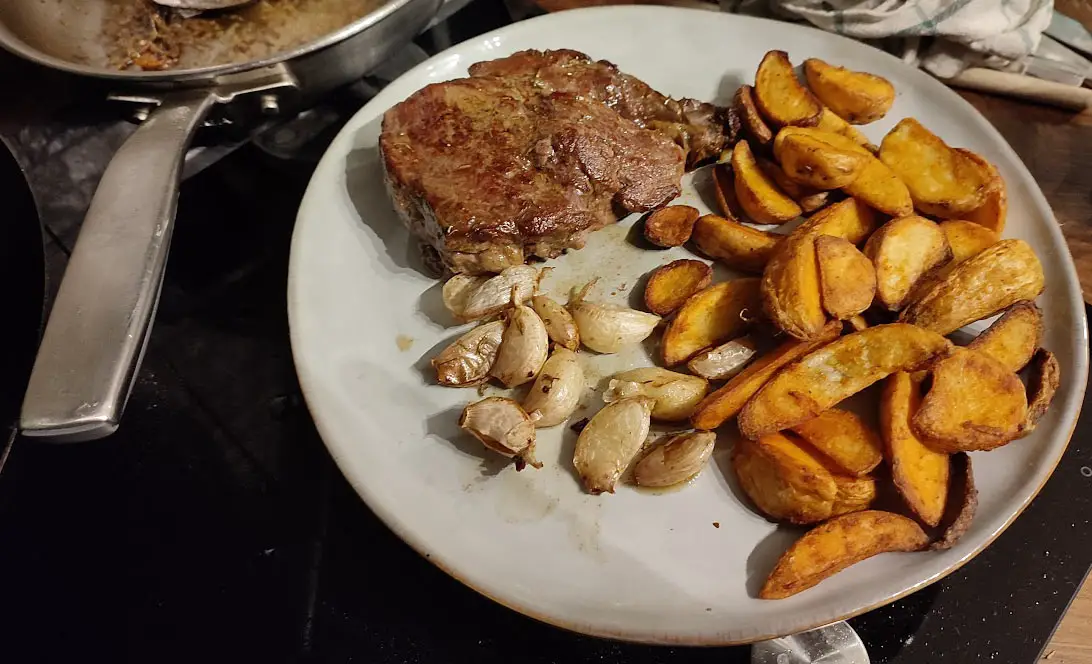
The meat you eat is only as good as the quality of the cuts you start with, so be sure to buy the best you can afford. Once you’ve got your hands on some good meat, it’s time to choose a cooking method.
Whether you’re cooking chicken, pork, beef, or lamb, there’s a method that will help you prepare a meal that will make your taste buds sing. Read on for a comprehensive guide to the best cooking methods and the best cuts for meat.
Top 6 Best Cooking Methods for Meat:
Here are the 6 best cooking methods for meat, whether you’re working with chicken, pork, beef, or lamb.
1. Grilling Meat
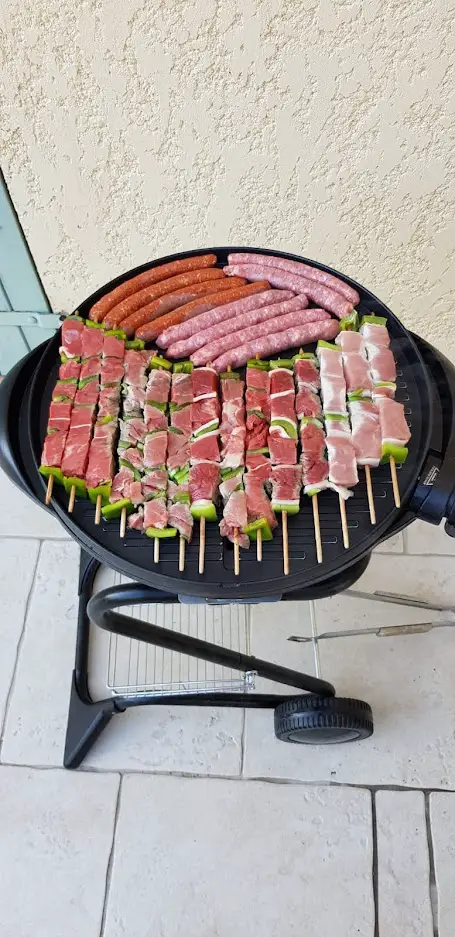 Grilling is a classic cooking method that’s perfect for summertime. Grilling can add a delicious smoky flavor to your meat when done right. It’s also relatively quick and easy, making it ideal for weeknight dinners.
Grilling is a classic cooking method that’s perfect for summertime. Grilling can add a delicious smoky flavor to your meat when done right. It’s also relatively quick and easy, making it ideal for weeknight dinners.
The nutrient loss in meat can be retained better when cooked using dry-heat cooking instead of wet heat, making grilling a healthier option and avoid health risk.
To grill chicken, pork, or beef, start by preheating your grill to medium-high heat. Then, lightly oil the grates and place your meat on the grill. Cook for 5-7 minutes per side, or until cooked through.
Lamb is a bit trickier to grill, as it tends to be fatty meat. To avoid flare-ups, cook lamb on a lower heat and brush the grates with oil before adding the meat.
It’s important to remember, however, that grilling can dry out your meat if you’re not careful. To avoid cooking losses of nutrients, marinate your meat before grilling, and don’t overcook it.
2. Sautéing Meat
Sautéing is a quick and easy cooking method that’s perfect for weeknights. It’s another great way to cook chicken, pork, or beef if you’re looking for something that’s not too heavy.
When sautéing, it’s important to use a bit of oil in your pan to prevent the meat from sticking. To flavor your dish, you can also add other ingredients, like garlic or onions.
To sauté chicken, pork, or beef, start by heating a bit of oil in a skillet over medium-high heat. Then, add your meat to the pan and cook for 3-5 minutes per side, or until cooked meat through.
If you’re cooking a leaner cut of meat, like chicken breast, meat cooks a bit later.
Some people like to finish their dish by deglazing the pan with a bit of wine or broth. This adds flavor and helps to create a sauce for your dish.
3. Roasting Meat
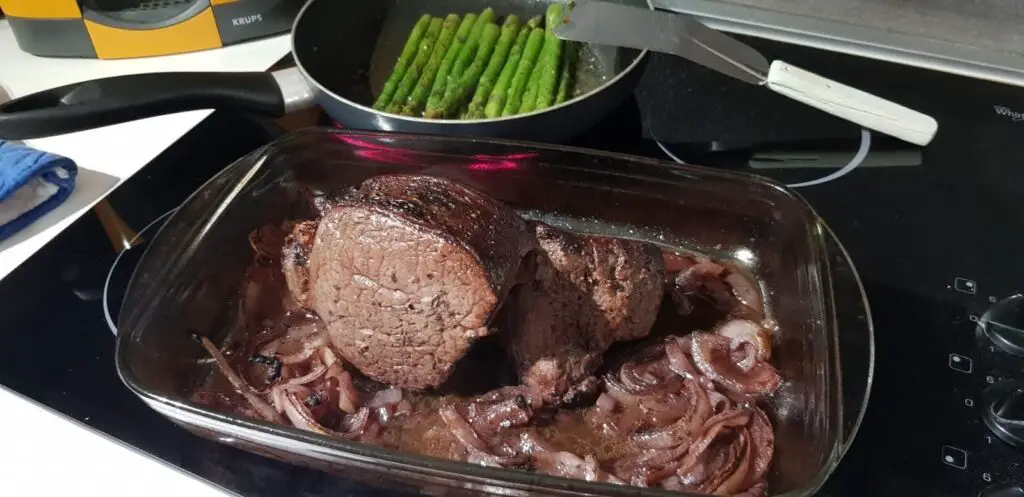
Roasting is a great cooking method for larger cuts of meat, like pork loin or chuck roast. It’s also a good option if you’re looking to feed a crowd, as it’s relatively easy to make a large quantity at once.
Roasting generally results in a bit of a drier final product, so it’s not the best method if you’re looking for something that’s super moist.
To roast meat, start by preheating your oven to the appropriate temperature. You’ll want to roast at 400 degrees Fahrenheit for chicken, pork, or beef. Then, place your meat in a roasting pan and cook for the appropriate amount of time.
Whole chicken or turkey will take longer to roast than pork loin or roast beef. Pork loin, meanwhile, will take less time than beef roast.
Use a meat thermometer to check doneness, and be sure not to overcook your delicate meats.
4. Braising Meat
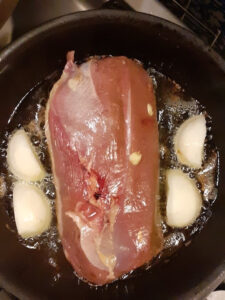 Braising is another great cooking method for tougher, cheaper cuts of meat. The extended cooking time helps to break down the tough connective tissue in the meat, making it more tender.
Braising is another great cooking method for tougher, cheaper cuts of meat. The extended cooking time helps to break down the tough connective tissue in the meat, making it more tender.
Braising also results in a moister final product, so it’s a good option if you’re looking to avoid dry heat method.
To braise meat, start by browning it in a bit of olive oil in a large crock pot or Dutch oven. Then, add some liquid, like broth or hot water, and bring it to a simmer.
Cover the pot and cook the meat on low indirect heat for several hours or until it’s tender. Nowadays, you can also find slow cookers with a braise setting, which makes the process even easier.
This convenient method is well suited for winter, as the long cooking time results in a warm and comforting dish. For a complete meal, you can add vegetables to your braises, like carrots or potatoes.
5. Stewing Meat
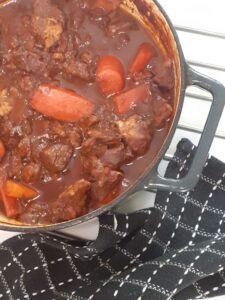 Stewing is similar to braising in that it’s a great way to cook tough, cheaper pieces of meat. The difference is that stew generally contains more liquid than a braise, resulting in a soup-like dish.
Stewing is similar to braising in that it’s a great way to cook tough, cheaper pieces of meat. The difference is that stew generally contains more liquid than a braise, resulting in a soup-like dish.
The nutrients from the stewing liquid also tend to be absorbed more by the meat, making it even more flavorful.
To stew meat, start by browning it in a bit of oil in a large pot or convection oven. Then, add enough hot liquid to cover the meat and bring it to a simmer.
Cover the pot and cook the meat on low moist heat cooking for several hours or until it’s tender. You can add fresh vegetables to your stew, like carrots or potatoes.
When stewing, try cooking in liquids with flavor. Beef or chicken broth are both good options. You can also add wine, beer, or cider for additional flavor.
Stews are the perfect delicate food for winter and can be easily made ahead of time and frozen for later. They’re also great for feeding a crowd, as they can be easily multiplied.
6. Pan Frying or Stir-Frying Meat
Pan frying or stir-frying is a great way to cook small, quick-cooking cuts of meat, like chicken breast or pork tenderloin.
It’s also a good option if you’re looking for healthy cooking fats, as there’s not a lot of oil involved causing heart disease risk.
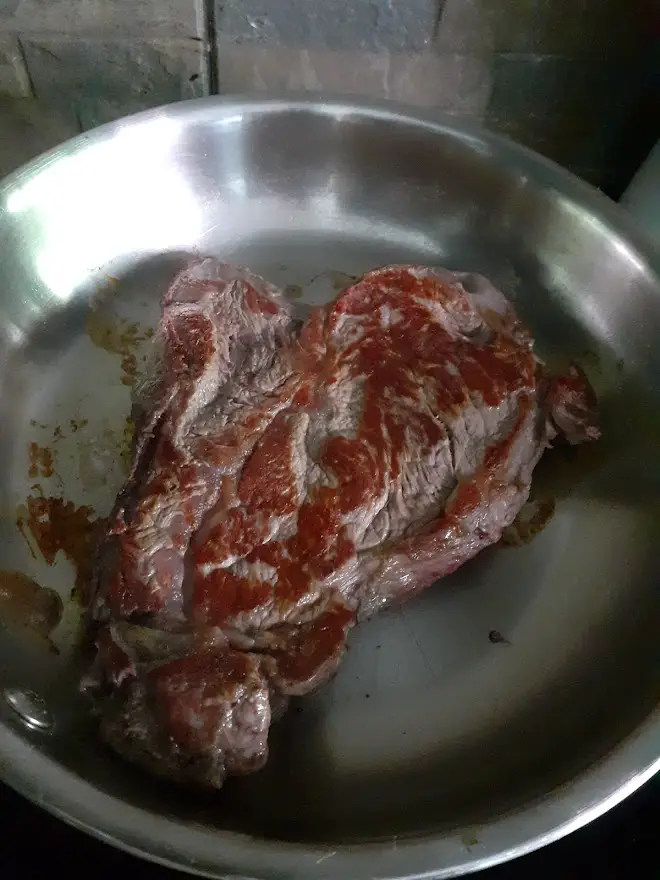
To pan-fry meat, start by heating a bit of oil in a large skillet over medium-high direct heat source.
Then, add your meat and cook it for the appropriate amount of time. Use a thermometer to check for doneness, and be sure not to overcook your meat.
If you’re pan-frying chicken, you can also create a quick and easy sauce by adding some broth or wine to the pan and cooking it down until it’s reduced. This is a great way to add flavor without adding a lot of calories.
Best Cuts of Meat: Which One to Buy?
When purchasing raw meat, there are myriad options available at the grocery store. With all the different cuts and grades of meat, it can be hard to know which one to choose.
Your next meal will be more enjoyable if you know what cuts of meat to choose.
There are four main types of meat: beef, pork, poultry, and lamb. Each type of meat has different cuts that are best suited for different cooking methods.
- Beef
Beef is a popular type of meat in the US. It is rich and flavorful and can be cooked in various ways. The different cuts of beef are:
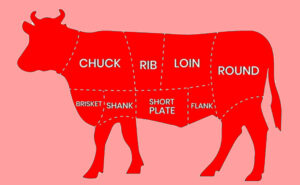 Chuck: Beef chuck is from the shoulder of the cow and is relatively tough. It is best suited for slow cooking methods such as braising or stewing.
Chuck: Beef chuck is from the shoulder of the cow and is relatively tough. It is best suited for slow cooking methods such as braising or stewing.
Round: This cut is from the rear of the cow and is also tough. It is best cooked using slow methods like roasting or braising.
Sirloin: This cut is from the rear of the cow and is a bit more tender than the round. It can be cooked using quick cooking techniques such as grilling or pan-frying.
Tenderloin: This and beef eye is the most tender cut of beef and is found in the center of the cow. It should be cooked using quick methods such as grilling, air fryer cooking, or oven roasting.
- Pork
Pork is another popular type of meat that is versatile and flavorful. The different cuts of pork are: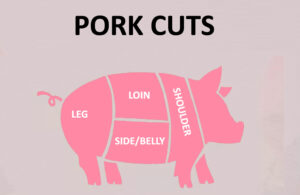
Shoulder: This cut is from the shoulder of the pig and is tough. It is best cooked using slow methods such as braising or stewing.
Loin: This cut is from the back of the pig and is relatively tender meat. It can be cooked using quick methods such as grilling, pan-frying, or oven roasting.
Belly: This cut is from the stomach of the pig and is very fatty. It is best cooked using slow methods like braising or smoking.
- Poultry
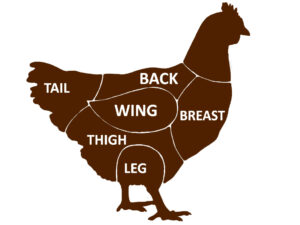 Poultry is a leaner option that can be just as flavorful as other chemical composition of meat. The different cuts of poultry are:
Poultry is a leaner option that can be just as flavorful as other chemical composition of meat. The different cuts of poultry are:
Breasts: This is the leanest cut of poultry used as breasts for salad and is found on the chest of the bird. It can be cooked using healthy cooking methods such as grilling, pan-frying, or oven roasting.
Thighs: This cut is from the legs of the bird and is relatively fatty. It is best cooked using slow methods like braising or stewing.
Wings: This cut is from the wings of the bird and is mostly skin and bone. They are best cooked using quick methods like frying or grilling.
- Lamb
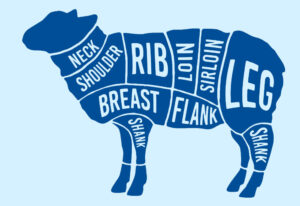 Lamb is a flavorful type of meat that is popular in many cultures. The different cuts of lamb are:
Lamb is a flavorful type of meat that is popular in many cultures. The different cuts of lamb are:
Shoulder: This cut is from the shoulder of the lamb and is tough. It is best cooked using slow method of cooking like beef for braising or stewing.
Ribs: This cut is from the ribs of the lamb and is relatively tender. Ribs are excellent source of meat to cook using quick methods like grilling or conventional oven roasting.
Leg: This cut is from the leg of the lamb and is also tender. It can be cooked using quick methods such as grilling or pan-frying.
When purchasing meat, be sure to ask the butcher or grocery store clerk for advice on which cut would be best for your desired recipe. With this guide, you can select the best cut of meat for your next meal.
Frequently Asked Questions:
What are the four kinds of doneness in meat?
The four kinds of doneness in meat are medium rare, medium, medium well, and well done. It is important to know how you like your bites of meat cooked so that you can order it accordingly at a restaurant or cook it to your liking at home.
What are the safe cooking temperatures for various meat?
The safe cooking temperatures for meat are as follows: fish, 145 degrees F; beef, pork, lamb, and veal (steaks, roasts, and chops), 160 degrees F; ground beef, pork, lamb, and veal, 160 degrees F; and poultry, 165 degrees F.
What is the most accurate method to determine the degree of doneness in meat?
The most accurate method to determine the degree of doneness in meat is using a food thermometer. It is important to insert the food thermometer into the thickest part of the meat, careful not to touch bone, food in fat, or gristle.
What is the perfect temp for steak?
The perfect temperature for steak is medium rare, 145 degrees F. Steaks will have a pink center and a slightly charred exterior at this temperature.
Conclusion:
So, there you have it! These are some of the best cooking methods for meat.
No matter what meat you’re cooking, there’s a method to help you get the perfect results.
The cuts of meat, the cooking time, and the temperature affect how your meat will turn out.
So, keep these factors in mind when you’re cooking. With a little practice, you’ll be a pro in no time!
Have you any favorite cooking methods for meat? Please share with us in the comments below!
